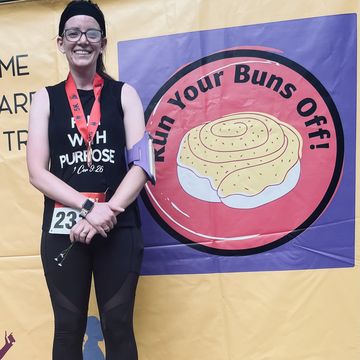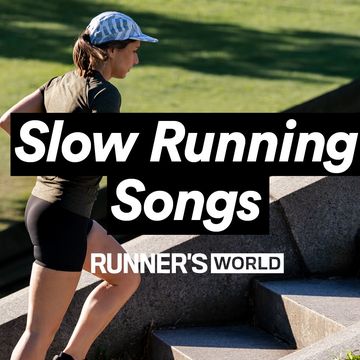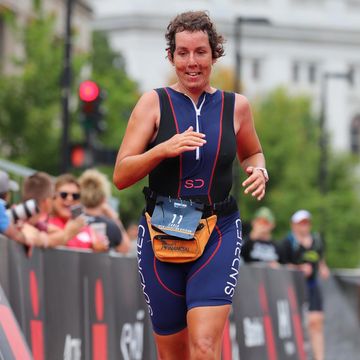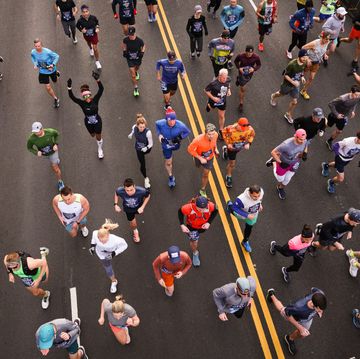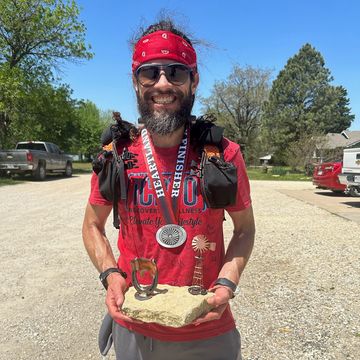This story discussed eating disorders. If you or someone you care about is struggling with an eating disorder, you can contact the National Eating Disorders Association (NEDA) helpline at 1-800-931-2237. For a 24-hour crisis line, text “NEDA” to 741741.
25-year-old Jake Smith got a hell of a start in the running world. Last January, the Brit joined the NN Running Team (NNRT), granting him the opportunity to lace up alongside greats like Eliud Kipchoge and Joshua Cheptegei. But he soon found that training in Uganda had its challenges. He developed Relative Energy Deficiency in Sport (RED-S), a condition that causes severe injury and mental distress.
RED-S, previously known as “the female athlete triad,” is less common (or at least less talked about) in men’s sports. However, the condition can develop in athletes of any age, gender, and ability if their physical activity exceeds their caloric intake. “I didn’t really know what [RED-S] was,” Smith said in an interview with Mirror. “Women have spoken about it but not many men. I wasn’t surprised I had an eating disorder. I calculated on an app that in a typical week I’d burn four to five thousand calories a day but only eat two thousand.”
More From Runner's World

In an interview with Athletics Weekly last year, Smith shared that while he was stoked to be training with some of the world’s most elite athletes, his body had a tough time adjusting to the hills, altitude, and diet in Uganda. “I loved the whole experience, but I pushed my body to the absolute limit out there, and, I put my hands up, I did overtrain because it was my first time there,” said Smith. By the time the trip was over, he weighed about 53 kilograms or about 117 pounds.
Today, Smith said that he realizes that his disordered eating behaviors date back further than last year. Growing up, bullying led him to skip breakfast and restrict his caloric intake at other meals. He also recalled looking in the mirror and thinking that he could still stand to lose weight—even as he was peaking in his workouts and competitions.
Eventually the weight loss took its toll. His bone density and testosterone levels gradually dropped, and he broke his foot last winter. As a distance runner, he didn’t think much of it and cross-trained vigorously to stay in shape. Then he fractured his sacrum in spring, something he says was a “blessing in disguise because it made me realize I need to change it all round.” He was diagnosed with RED-S. Now, with the help of his team, he’s learning to fuel properly while gradually building his training load.
“I’ve never felt so strong,” he told Mirror. “When I was really struggling and not eating properly, my max heart rate would only be about 170 because my body just couldn’t function. Now I can get up to 200 in sessions on the cross-trainer. Speaking to my coach, people want me to do testing again. Now I can get my heart rate higher, I’ll be able to compete at a higher level.”
He also says that he still dreams of heading to the Olympics, something that’s very much a possibility given his plucky determination. Smith finished 18th (60:31) in the world half marathon championship in 2020, cementing his place as the third-fastest British distance runner. While pacing the Cheshire Elite Marathon in 2021, he also decided to stride ahead and win the race in 2 hours and 11 minutes.
“I want to go to the Olympics, I want to win medals,” he said. “That’s why I’m documenting it. I want to show people that whatever happens you can do anything.”
Kells McPhillips is a health and wellness journalist living in Los Angeles. Her work has appeared in Runner's World, The New York Times, Well+Good, Fortune, Shape, and others.



